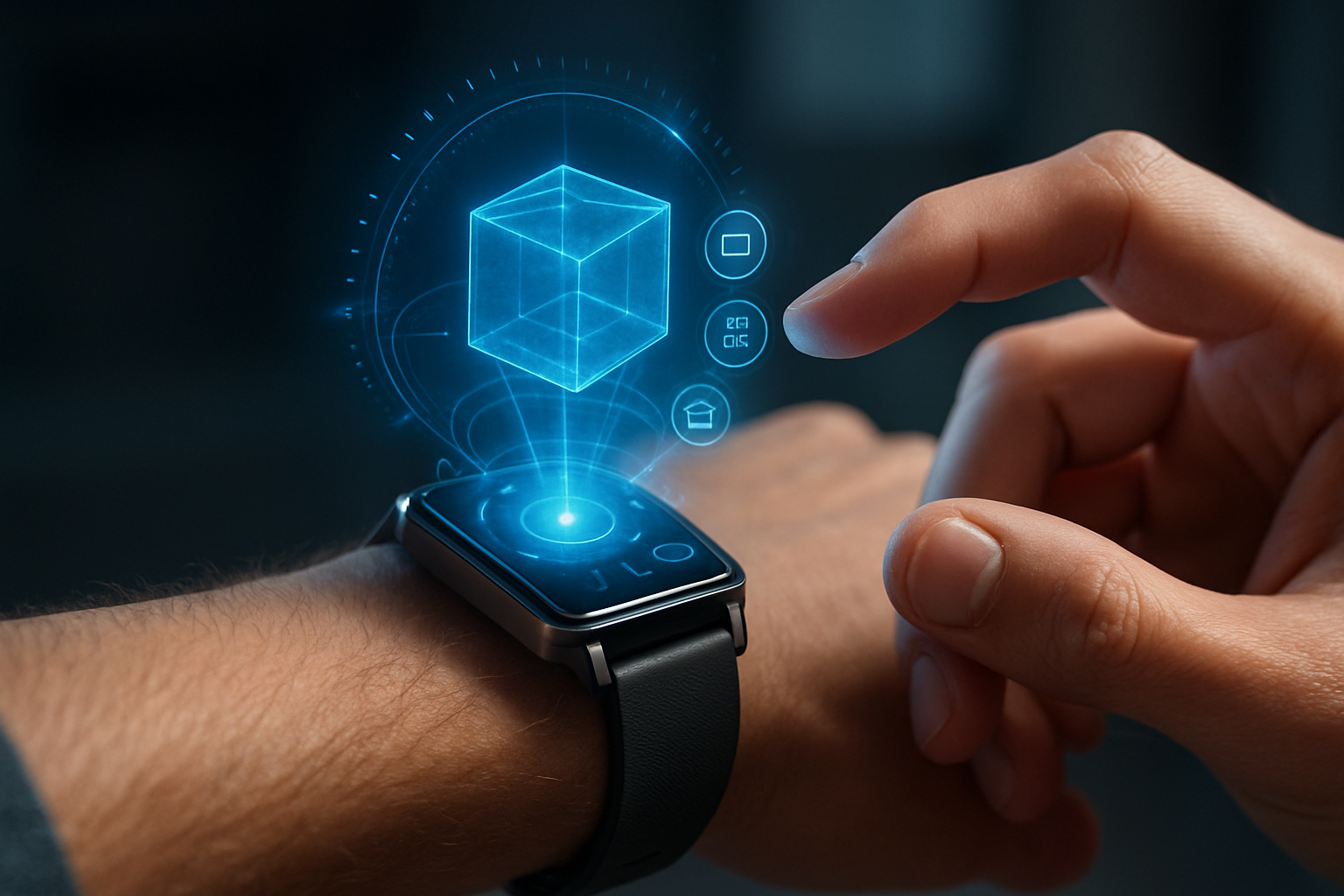Holographic Smartwatches: The Next Frontier in Wearable Tech
In a world where smartwatches have become ubiquitous, a groundbreaking innovation is set to redefine our interaction with wearable technology. Holographic smartwatches, once a figment of science fiction, are now on the cusp of becoming reality. This cutting-edge technology promises to transform the way we view and interact with information on our wrists, offering a glimpse into a future where the line between the digital and physical worlds becomes increasingly blurred.

As smartwatches became more sophisticated, incorporating features like health monitoring, mobile payments, and even cellular connectivity, the need for a more expansive and intuitive display became apparent. This demand paved the way for research into holographic technology as a potential solution.
Holographic Technology: A Brief Overview
Holography, the science of creating three-dimensional images using light interference patterns, has been around since the 1940s. However, its application in consumer electronics has been limited due to technological constraints and high costs.
Recent advancements in miniaturization, light projection, and computational power have finally made it feasible to integrate holographic displays into compact devices like smartwatches. These displays use a combination of lasers, micro-mirrors, and sophisticated algorithms to project three-dimensional images that appear to float above the watch face.
The Mechanics of Holographic Smartwatches
At the heart of a holographic smartwatch is a complex system of miniaturized components working in harmony. A high-precision laser array projects light onto a series of micro-mirrors, which then reflect and diffract the light to create a three-dimensional image in mid-air.
The watch’s processor continuously adjusts the projection based on the viewer’s perspective, ensuring that the hologram remains visible and properly aligned from various angles. Advanced eye-tracking technology helps maintain the illusion of a stable, floating image even as the user moves their wrist.
Expanding the User Interface
Holographic displays dramatically expand the effective screen size of smartwatches without increasing their physical dimensions. This allows for more complex interfaces and the presentation of richer information.
For example, a fitness tracking app could display a three-dimensional model of the human body, highlighting areas affected by the user’s workout. Navigation apps could project miniature cityscapes, making it easier to visualize directions. Even simple tasks like reading messages or checking the time could be enhanced with depth and dimensionality.
Interaction and Input Methods
Perhaps the most exciting aspect of holographic smartwatches is the potential for new interaction methods. Users could manipulate holographic objects directly with their fingers, using gestures to rotate, zoom, or select items in three-dimensional space.
Some prototypes incorporate haptic feedback systems that create the sensation of touching solid objects within the hologram. This tactile response adds another layer of immersion and functionality to the holographic interface.
Challenges and Limitations
While the concept of holographic smartwatches is undeniably exciting, several challenges must be overcome before they can become mainstream. Power consumption is a significant concern, as projecting and maintaining a holographic display requires considerably more energy than traditional screens.
Environmental factors such as bright sunlight or rain could potentially interfere with the hologram’s visibility. Developers are working on adaptive projection systems that can adjust to various lighting conditions and even project on nearby surfaces when necessary.
The Road to Commercialization
Several tech giants and startups are currently racing to bring the first holographic smartwatch to market. While most details remain closely guarded, industry insiders suggest that we could see commercial products within the next two to three years.
Early estimates place the price of first-generation holographic smartwatches in the premium range, likely between $1,000 to $1,500. As with most new technologies, prices are expected to decrease as manufacturing processes improve and adoption increases.
The Future of Wearable Displays
Holographic smartwatches represent just the beginning of a new era in wearable displays. As the technology matures, we can expect to see holographic projections incorporated into other devices, from smartphones to smart glasses.
The potential applications extend far beyond consumer electronics. Medical professionals could use holographic wearables to visualize patient data in real-time during surgeries. Engineers and architects might employ them for on-site 3D modeling and design revisions.
As we stand on the brink of this technological leap, it’s clear that holographic smartwatches are poised to reshape our relationship with wearable technology. By breaking free from the constraints of physical screens, they offer a tantalizing glimpse into a future where information truly comes to life before our eyes.





